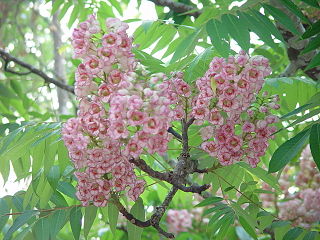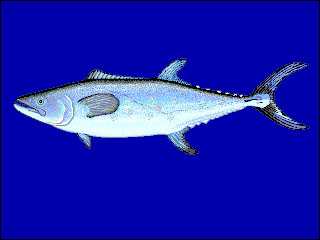
The great cormorant, known as the black shag or kawau in New Zealand, formerly also known as the great black cormorant across the Northern Hemisphere, the black cormorant in Australia, and the large cormorant in India, is a widespread member of the cormorant family of seabirds. The genus name is Latinised Ancient Greek, from φαλακρός and κόραξ, and carbo is Latin for "charcoal".

The chestnut munia or black-headed munia is a small passerine. It was formerly considered conspecific with the closely related tricoloured munia, but is now widely recognized as a separate species. This estrildid finch is a resident breeding bird in Bangladesh, Brunei, Cambodia, China, India, Indonesia, Laos, Malaysia, Burma, Nepal, the Philippines, Singapore, Taiwan, Thailand, Vietnam and Hawaii. It also has been introduced to all the Greater Antilles and Martinique in the Caribbean.

Camellia sinensis is a species of evergreen shrub or small tree in the flowering plant family Theaceae. Its leaves and leaf buds are used to produce black and green tea. Common names include tea plant, tea shrub, and tea tree.

The Chinese alligator, also known as the Yangtze alligator, China alligator, or historically the muddy dragon, is a crocodilian endemic to China. It and the American alligator are the only living species in the genus Alligator of the family Alligatoridae. Dark gray or black in color with a fully armored body, the Chinese alligator grows to 1.5–2.1 metres (5–7 ft) in length and weighs 36–45 kilograms (80–100 lb) as an adult. It brumates in burrows in winter and is nocturnal in summer. Mating occurs in early summer, with females most commonly producing 20–30 eggs, which are smaller than those of any other crocodilian. The species is an opportunistic feeder, primarily eating fish and invertebrates. A vocal species, adults bellow during the mating season and young vocalize to communicate with their parents and other juveniles. Captive specimens have reached age 70, and wild specimens can live past 50.
Muricococcum is a genus of plant of the family Euphorbiaceae first described as a genus in 1956. It contains only one known species, Muricococcum sinense, native to southern China and northern Vietnam.

The Chinese softshell turtle is a species of softshell turtle that is native to China and Taiwan, with records of escapees—some of which have established introduced populations—in a wide range of other Asian countries, as well as Spain, Brazil and Hawaii.

The South China catshark is a catshark of the family Scyliorhinidae, known only from the holotype, which was taken from the South China Sea at a depth of 537 m. Its length is 42 cm, but this measurement was taken from an immature specimen. The reproduction of the South China catshark is oviparous.

The Asian parti-colored bat is a species of parti-coloured bat. An adult Asian parti-colored bat has a body length of 6–7 cm (2.4–2.8 in), a tail of 4.3–4.5 cm (1.7–1.8 in), and a wing length of 5 cm (2.0 in). Asian parti-colored bats are distributed across East Asia, from Taiwan through eastern China, eastern Mongolia and Russia (Siberia) to the Korean Peninsula and Japan.
Sinobdella sinensis is an East Asian species of the spiny eel family of the order Synbranchiformes. It is the only species in the genus Sinobdella according to FishBase, but another species, S. dienbienensis, is placed there by Catalog of Fishes.

The Mindanao mountain rat or long-tailed moss mouse, is a species of rodent in the family Muridae. It is found only in the Philippines, where it is present at high altitudes in the Kitanglad Mountain Range on the island of Mindanao.
"Mauremys" glyphistoma is a hybrid turtle in the family Geoemydidae. Originally described as a new species supposedly endemic to Guangxi/China; it was classified as Data Deficient in the IUCN Red List.

The Chinese stripe-necked turtle or golden thread turtle, is a species of turtle in the family Geoemydidae. They are widely distributed in the subtropical regions of Taiwan.

The shrew gymnure, or shrew hedgehog, is a species of mammal in the family Erinaceidae and is the only extant species in the genus Neotetracus. It is found in China, Myanmar, and Vietnam.

Bretschneidera sinensis, the sole species in genus Bretschneidera, is a rare, 10–20 metres (33–66 ft) tall a monotypic species of tree with large inflorescences. It is found in south and east of China, Taiwan, northern Thailand and northern Vietnam. It is threatened by habitat loss. Because of its relatively recent discovery in Taiwan and Thailand, it is possible that it could also be found in Laos and northern Myanmar. It was named in honor of Emil Bretschneider.
Sciaromiopsis is a genus of moss in the family Amblystegiaceae.

The fanray is a species of ray in the family Platyrhinidae that lives in the western Pacific Ocean. It typically grows to a length of 30–50 centimetres (12–20 in) and a weight of 200–500 grams (7.1–17.6 oz), with a brown upperside and a white underside. It eats fish and crustaceans and has poor mobility. Males live to age five and females to age twelve, with both sexes maturing between two and five years. The species is found in China, Japan, Taiwan, Korea, Vietnam, and possibly Indonesia, in waters shallower than 100 metres (330 ft). It is probable that its population is declining due to being caught as a bycatch.

The gray-bellied mountain rat, also known as the gray-bellied limnomys and the buffy-collared moss-mouse, is a species of rodent in the family Muridae.

The Chinese mackerel, also known as the Chinese seerfish, is a ray-finned bony fish in the family Scombridae, better known as the mackerel family. More specifically, this fish is a member of the tribe Scomberomorini, the Spanish mackerels. It is a marine species occurring in the Western Pacific Ocean, but it also enters the Mekong River.
Tor sinensis, the Chinese or Red mahseer is a species of mahseer native to the Mekong River. It is known with certainty only from Yunnan, China; reports from Cambodia, Laos, and Thailand require confirmation.
It is one of four currently valid species described from China, the others being Tor laterivittatus, Tor polylepis, and Tor yingjiangensis.
The Chinese shortwing is a species of chat. This species is now classified in the family Muscicapidae.














